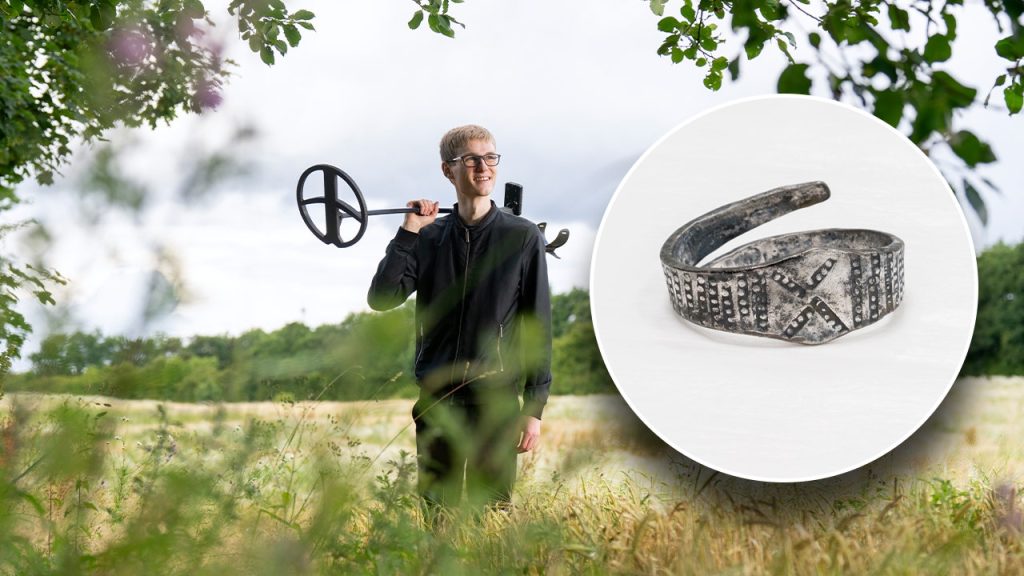A 22-year-old college student in Denmark named Gustav Bruunsgaard uncovered an ancient find in a field near Elsted. He found a silver arm ring with his metal detector, which led to the discovery of six more pieces of ancient jewelry dating back to the early days of the Viking Age around 800 A.D. The total weight of the seven silver pieces found by Bruunsgaard was more than half a kilogram. It is believed that these pieces were used as a form of payment during the Viking Age and were traded for other goods. Danish and international experts have further investigated the jewelry, which will be displayed at the Moesgaard Museum and later transferred to the National Museum of Denmark.
The discovery of the ancient silver pieces has shed light on the connection between Aarhus and regions such as Russia, Ukraine, and the British islands during the Viking Age. The Viking Age was characterized by extensive sea travel, raids, trade, and the conquering of land. The findings in Denmark highlight how Aarhus was a central hub in the world of the Vikings, with trade routes extending from the North Atlantic to Asia. Three of the band-shaped rings found in Denmark have a design that is similar to ones created in Ireland, where the style became popular. Additionally, some of the bangles discovered have origins in Scandinavia and England.
Kasper H. Andersen, a historian at the Moesgaard Museum, described the discovery as a “fantastically interesting find from the Viking Age” that connects Aarhus with various regions around the world. The unearthed silver pieces, particularly the rings and bangles, provide insight into the trade and artistic connections that existed during the Viking Age. The museum highlighted the different design styles present in the jewelry, with some resemblances to items from Russia, Ukraine, Ireland, Scandinavia, and England. The silver treasure found by Bruunsgaard is currently on display at the Moesgaard Museum and will eventually be transferred to the National Museum of Denmark.
The discovery of the ancient silver treasure by the young archaeology student has sparked interest among researchers and historians in Denmark and beyond. The find is considered significant due to its connections to various regions and its potential role as a form of trade and currency during the Viking Age. The jewelry discovered by Bruunsgaard adds to the existing knowledge of Viking Age artifacts and the trade networks that existed during that time. The items found in the burial mound near Elsted provide valuable insights into the material culture of the Vikings and their interactions with other civilizations.
The finds made by Bruunsgaard highlight the archaeological potential in Denmark and the importance of engaging with local communities to uncover ancient treasures. The field near Elsted where the silver jewelry was discovered had previously yielded objects dating back to the Viking Age, indicating the rich historical heritage of the region. The collaboration between the young archaeology student, the museum experts, and international researchers has contributed to the understanding of the Viking Age and its significance in the broader context of global history. The ancient treasure unearthed in the burial mound serves as a reminder of the enduring legacy of the Vikings and their impact on various cultures around the world.


